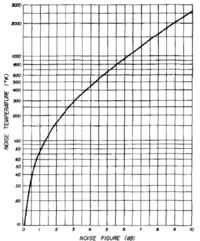Anton89
Member level 3
Hello everyone,
I know that the avaiable thermal noise power spectral density at the receiver input is approximatly -173 dBm/Hz (at room temperature).
I've always read in the literature that to calculate output signal and output noise I have to do as follow:
Signal_output = Signal_input + Receiver_gain
Noise_output = Noise_input + Receiver_gain + Receiver_noise_figure
Where I think "Noise_input" is the thermal noise power spectral density (-173 dBm/Hz).
I don't understand... Does not the signal input have its own noise??? I mean, the signal input is generated by a source, such as a RF transmitter. If the transmitter is a SDR, it has a DAC to generate a certain waveform. The DAC has its noise, which is not at thermal noise level (-173 dBm/Hz), but at higher level. The transmitter RF chain will add its own noise as well.
Definitely, the generated signal is corrupted by noise that is not at thermal noise level.
So, why does the literature perform the calculations by starting from the thermal noise level? It's weird...
Help me to understand where I'm making a mistake.
Thank you
I know that the avaiable thermal noise power spectral density at the receiver input is approximatly -173 dBm/Hz (at room temperature).
I've always read in the literature that to calculate output signal and output noise I have to do as follow:
Signal_output = Signal_input + Receiver_gain
Noise_output = Noise_input + Receiver_gain + Receiver_noise_figure
Where I think "Noise_input" is the thermal noise power spectral density (-173 dBm/Hz).
I don't understand... Does not the signal input have its own noise??? I mean, the signal input is generated by a source, such as a RF transmitter. If the transmitter is a SDR, it has a DAC to generate a certain waveform. The DAC has its noise, which is not at thermal noise level (-173 dBm/Hz), but at higher level. The transmitter RF chain will add its own noise as well.
Definitely, the generated signal is corrupted by noise that is not at thermal noise level.
So, why does the literature perform the calculations by starting from the thermal noise level? It's weird...
Help me to understand where I'm making a mistake.
Thank you
